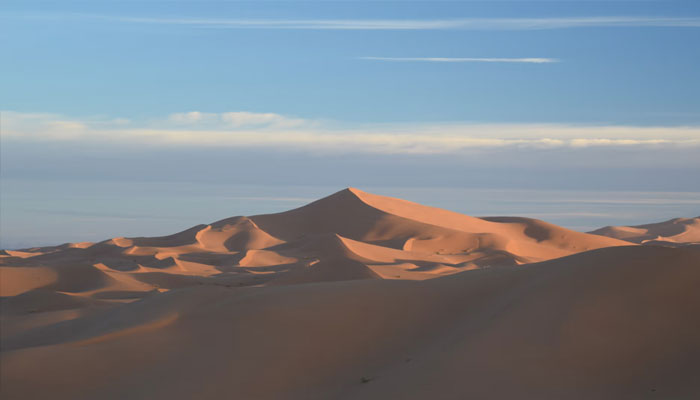Mystery of Morocco's Moving Star Dune — moving 50cm per year — finally resolved
Scientists call these dunes "extraordinary things" and "one of the natural wonders of the world"
March 04, 2024

Researchers, including experts from Aberystwyth University in Wales, have embarked on a journey to unravel the mysteries surrounding a giant star dune situated in a remote region of Morocco, The Guardian reported.
This colossal structure, reminiscent of pyramids from the ground and stars from the air, has captivated scientists studying its age, formation, and unique movement across the desert.
Professor Geoff Duller from the Department of Geography and Earth Sciences at Aberystwyth expressed awe, calling these dunes "extraordinary things" and "one of the natural wonders of the world."
The team, joined by academics from the University of London, focused their attention on a 100-meter high and 700-meter wide dune named Lala Lallia in the Erg Chebbi sand sea.
Surprising revelations emerged as the researchers determined that the base of the dune dates back 13,000 years, while the upper part formed relatively recently, in the last 1,000 years. Duller noted that the base stabilised about 9,000 years ago, possibly due to a wetter climate supporting vegetation. The star dune's formation accelerated when the climate changed again, driven by opposing winds from the southwest and north-east.
A crucial aspect discovered by the team is the dune's slow westward movement, propelled by an eastward wind at a rate of approximately 50cm per year. Duller emphasised the importance of understanding this movement for infrastructure development, such as roads and pipelines.
To unveil the dune's age, luminescence dating techniques were employed, leveraging Aberystwyth-developed methods. This involved analyzing the last time minerals in the sand were exposed to sunlight, utilising the quartz grains' unique property akin to a mini rechargeable battery.
Duller clarified that they focused on when the sand was deposited, not formed millions of years ago. The luminescence technique enabled them to measure the last time the sand grains saw daylight. The challenging task involved collecting sand grains without exposing them to light by cutting pits into the dunes and using an old drainpipe for sample gathering.
The findings, shedding light on the intriguing age and formation of Morocco's star dune, have been published in the journal Scientific Reports.









